I spoke with Stephanie Winn of You Must Be Some Kind of Therapist at the end of December. We got kinda deep and spiritual on the subject of cancellation and some other stuff.
Pride Restored pins
First batch of Pride Restored lapel pins going out today!
If you’d like some, DM me for payment arrangements. Prices includes shipping to the US:
5/$20
20/$60
50/$125 pic.twitter.com/FlhsoAdjiA— HeterodorxPodcast????????????? (@heterodorx) January 3, 2025
Cori Cohn made this unassuming post on Xitter about these pins and a week later it caught the eye of some very outraged children who in their fury drove about 5 million views to it.
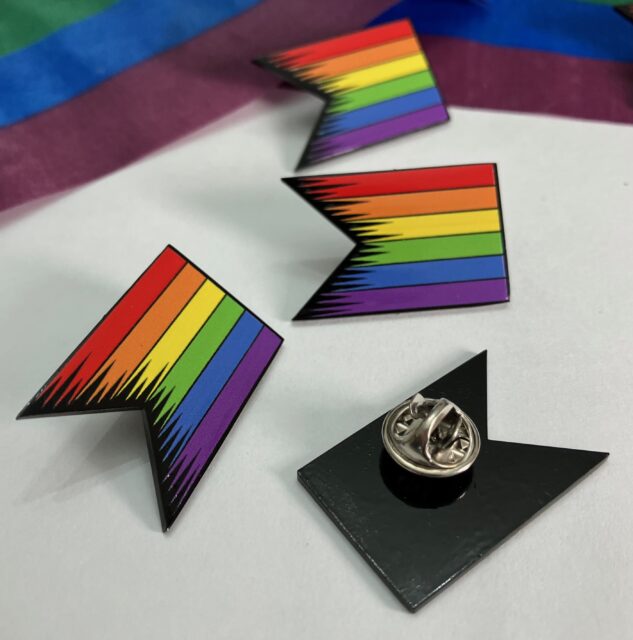
It features these pins I designed and project-managed for him. They’re a true collaboration: Cori’s vision, my execution. And now my further management and distribution, because after 2 million views I insisted on ordering more and listing them at my Merchandise Empire. Cori has run out already (obviously) but you can get them (currently backordered) here. Our new batch should arrive from China on January 24th, when I will commence packing and shipping pre-orders.
I Am An Asshole
A few days ago a TERF Sister and I were texting about being demonized by family members. Finally she wrote:
there’s endless assholes in the world and you know? I can just be one, if that’s how people gonna see me, then… fine, they CAN
and it’s fascinating just how much people do NOT want to hear that
(Ex-husband) definitely didn’t
and your brother doesn’t want to hear it either. They want to change you, they want you to feel you NEED to change because they’re mad or they disapprove or whatever
but fuck it
you think I’m an asshole? Okay. I CAN LIVE WITH THAT
Inspired by her, I resolved to Be More Asshole in 2025.
My new Asshole identity is working much better than my former identity of “Good Person.” A Good Person seeks to forgive. A Good Person, finding themselves in the path of an asshole, makes excuses like “they have their own struggles” or “there but for the grace of God go I.” But instead of giving me a warm sisterly feeling, my attempts to be Good only compound my hurt with a sense of spiritual inadequacy.
Now there’s nothing to forgive. People are assholes. They do whatever the hell they want with no consideration of me — or worse, targeting me as a scapegoat to relieve their own cognitive dissonance. Thank God I’m not above them or outside them anymore. For I, too, am an Asshole.
Asshole nature is human nature. We are born with it, it is integral to our being. At last I claim my human birthright and join my species.
Why the hell was I trying to be Good? Good People do the worst things. Good People project their shadows onto scapegoats and form mobs. Good People lie, appease, submit to authority, and crush the Truth in order to be liked and accepted. Because being liked and accepted is how you know you’re a Good Person. The worst crimes against Reality are performed by Good People, in their selfish, delusional, and fundamentally assholeic pursuit of being “good.” Just look at Democrats.
(I almost removed that jab at Democrats because it will offend many people I know. But you know what? I’m an Asshole!)
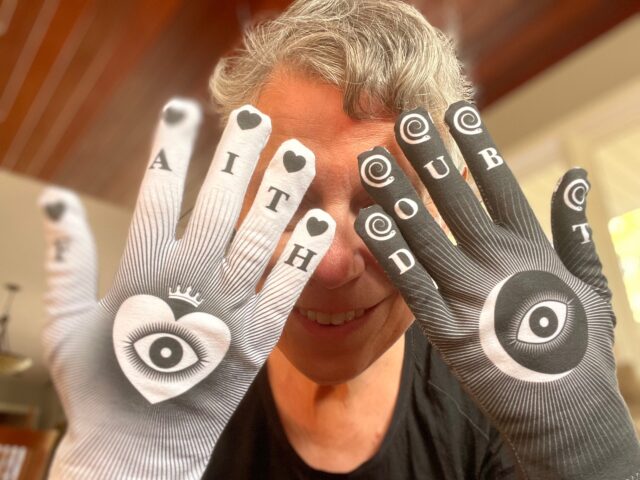
Perhaps I come to balance by embracing the dark. Those who embrace the light — faith, goodness — already have enough dark nature to serve as ballast. They are already assholes. Just as Doubt brings me to the same place as Faith, so being an Asshole brings me to the same place as being a Good Person. At this point I’d rather be an Asshole than a Good Person because I’ve never seen pure, unbridled, uncontrolled, contagious hate like Good Person hate.
But honestly, fuck my philosophizing. I don’t need to be Good anymore. I can just be me: an Asshole, as God intended. For we are created in God’s image, and if Scripture teaches us anything, it is that God is an Asshole.
More January 2025 Drawings
Drawing just one of these a day seems to be good exercise for me in the winter, when it’s too cold outside to bike.
Original Drawings available through my Store.





New Drawings for 2025
Original Drawings are now available through my Store.




My 2024 Year In Review
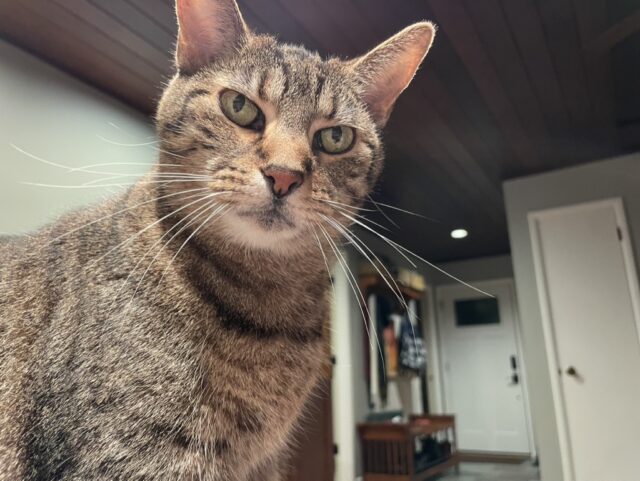
Writing is painful because of everything I think, I can only get a wee little bit on the page. I want to get EVERYTHING down and instead I squeeze out 1 to 2% at best.
I procrastinated writing my 2024 Year In review for this reason. How could I do this year justice? I would forget so much.
After several hours captioning photos, I realized forgetting is the point. Only getting 1 to 2% is the point. If you want EVERYTHING, you live Life itself. If you want writing, you recognize a few patterns and put those down. You can’t remember everything, nor should you. Forgetting is a gift. Pattern recognition requires excluding most information, which at the time of exclusion becomes mere “noise”.
Just a little bit is the point. Just for today is the point.
So, some patterns from 2024:
I began the year with rapidly-progressing Crohn’s disease, diagnosed in December. In addition to radical dietary restrictions and occasional shitting-of-my-pants, my skin was beset with plaques and flakes. In retrospect, I’ve probably had mild psoriasis most of my life, undiagnosed or misdiagnosed as “ringworm” which never responded to treatment and migrated around my body. In January and February my hair was rapidly falling out and my scalp flaking like a blizzard, while I spent most of my time resting at home to be near my very nice bathroom.
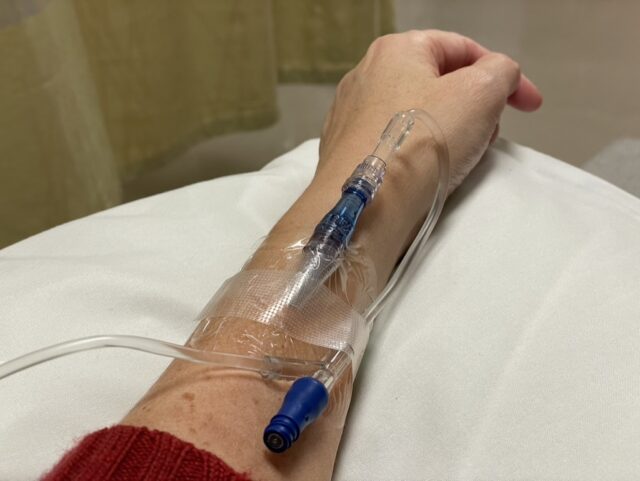
I love my bathroom. I love my house, too. In January it was still my Mom’s house. Built in 1956, we moved here in 2016 so she could “age in place” until it was time to move on to the high-end “Independent Living” complex half a mile away. This she finally did last August, and I thought I would move to a smaller house, preferably in the country near a river or lake as had always been my dream. Covid and Crohn’s dashed that dream to pieces, and I bonded with this house instead. But how would I afford its high taxes and other expenses? By letting out my Mom’s former suite via AirBnB. I have come to enjoy being a part-time host, and having a home with a guest suite makes me feel secure in the event I ever get really sick again and need in-home care.
For years I had discussed with my Mom buying the house from her as one possible (but not likely) future. Crohn’s collapsed my options into that future. In October we signed the deed transfer paperwork. There was no cash transaction; instead it was arranged as a sort of pre-inheritance, with her will adjusted to be fair to my siblings.
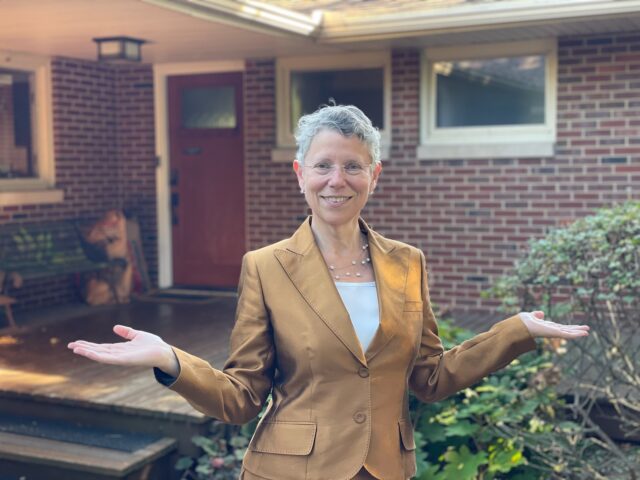
So now I am rich! Yet still low-income. Which I need to be, to qualify for the Medicaid which covers my Skyrizi injections which manage my Crohn’s disease. Skyrizi retails at $25,000 a dose, although no one pays that. I am an asset-wealthy poor person. Once I hit 65 I’ll be switched to MediCare, which will requisition my house as compensation if/when I go to a nursing home. That is okay with me. I have no heirs to inherit it, and it’s fine if it becomes my end-of-life insurance.
Speaking of rich, Bitcoin is currently valued over $100,000. I can’t afford to sell my 2+ bitcoin (all donated from back when it was worth way less), as it would count as income and I’d lose my Medicaid. So it will sit in its digital wallet until I’m old enough to afford it. In the meantime it might tank and become worthless. But for now, on virtual paper and in my imagination, I’m “financially secure.” Which is super weird given my life as a poor artist, especially one who has been cancelled since 2017 and made hardly any money.
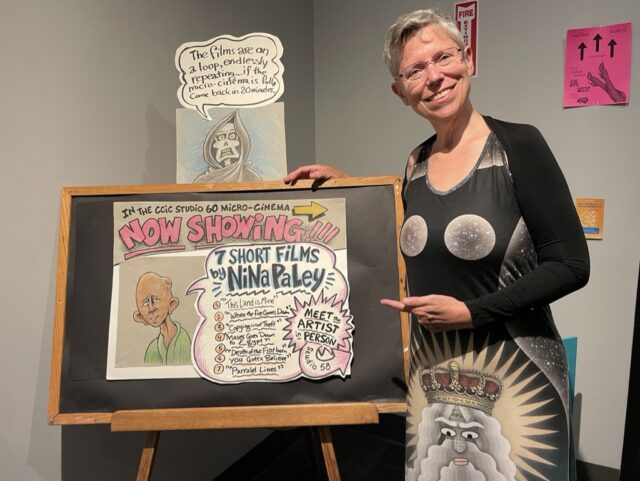
Speaking of my cancellation: 2024 is the year I let go of it. I will never return to my former, fancy, famous life, and I am okay with that. I haven’t got enough energy to continually resent the individuals who denounced and lied about me, destroying my career and reputation. I have come to accept social manias as a force of nature. “Forgive them…they know not what they do.” I live a much quieter life now, and I like it.
I didn’t fly at all this year. I love not flying. I did a few road trips with friends, which were fun, but sometimes disappointingly exacerbated my Crohn’s symptoms. Travel isn’t that great when you can’t freely sample new foods and restaurants. Also, my medication is an immunosuppressant so mingling with my fellow contagious humans in enclosed spaces is fraught. Covid nailed me to my bed for over a month and left me with lifelong autoimmune disease, forgive me if I’m warier of reinfection than most. In August I skipped a planned trip to RISE On The Land in Michigan, and then a flight to Portland for my Niece’s wedding, because Covid was rampant then. Forgive me. I’m a boring old shut-in crone now and I LIKE IT.
Well I’m not really a shut-in. I biked a lot this year, over 6,000 miles. Yeah I bike over the same Central Illinois landscape which I get to know better and better every year, like the back of my hand. Other cyclists put their bikes in cars and drive to new places to ride, but I don’t drive and I like sleeping in my own bed and of course having access to my own bathroom “in case something goes wrong” as it still does from time to time.
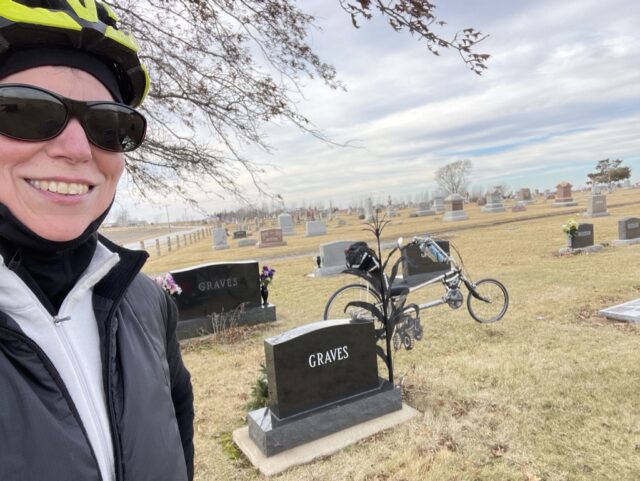
I love my “range” of up to 100 miles in any direction. The literal shape of the land beneath doesn’t change, but the life above varies so much from season to season or even week to week, there’s always new scenery. I see the rivers fall and rise with the rains, I mark time with the phases of the moon, I orient myself easily to the position of the sun in the sky. The leaves bud, grow, and fall; different flowers bloom and vanish; birds behave differently in mating and nesting seasons; one morning I even saw a doe suckling two young fawns, before they noticed me and bounded away. In the summer I rise before dawn to bike into the sunrise, and its position relative to the straight east-west roads can be read as a calendar.
This summer I did my longest ride ever, from Urbana Il to Indianapolis IN. I replaced a wheel’s rim tape for the first time, thus ending a struggle with chronic flats. I replaced a few 9-speed cassettes and long recumbent chains. I recorded a podcast about my fear of local bike mechanics; the upshot is, I do more bike maintenance myself.
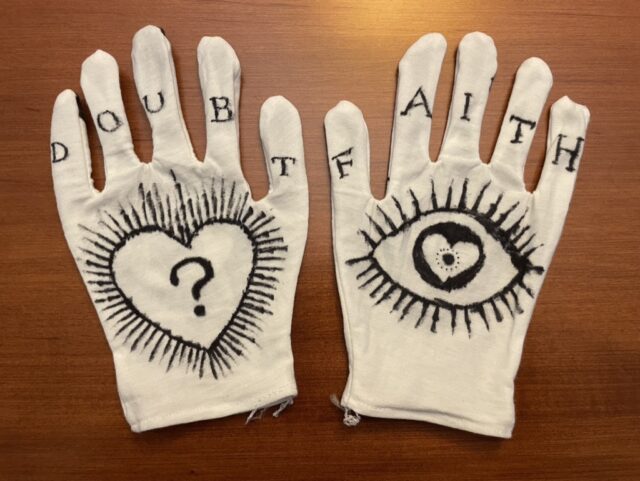
My biggest art project of the year has been art gloves. I didn’t make any animated movies. I am not moved to create much of what I used to, because I am older but moreso because the world has changed. AI generative art, which I find fascinating if overwhelming, is not even a game-changer; it’s a game-ender. That’s okay with me. I now focus on what I can do as a human, instead of trying to compete with AI. AI can animate faster and better than humans, and there’s little reason for me to create “online content” when limited audience attention is soaked up like a sponge by a constant glut of dreamlike video. But has AI generated art gloves? I DON’T THINK SO! I’m keeping my unique human edge, thank you.
I started writing more in August, same time I banished my “smart” phone from my bedroom. I keep a spiral notebook and pen next to my bed, and instead of reaching for the phone when I wake up, I write. After a few months of detox, my “morning brain” returned, and I wake up slowly thinking about all kinds of things, enjoying the time spent with myself instead of reading the latest bullshit on social media.
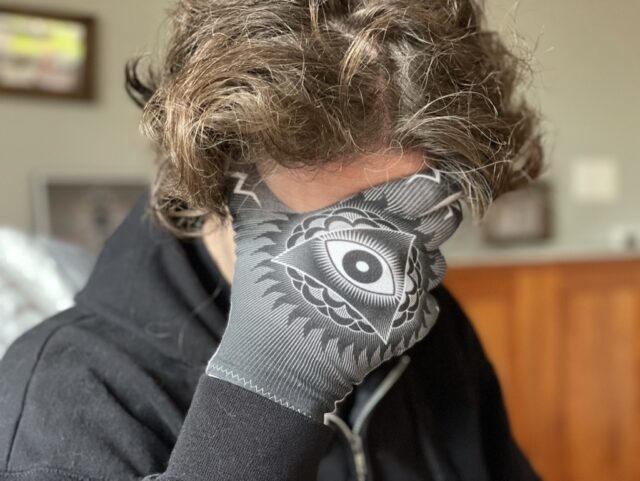
Cori and I continued recording Heterodorx podcasts, although inconsistently. The gender world changed drastically over 2024. Gender mania helped the Democrats lose the November elections. The social climate changed almost immediately, and sensible questioning of gender ideology doesn’t get one immediately condemned now. As it becomes safer to talk about, more people are poking their heads over the parapet. As such, Cori and I feel our work is mostly done. We have been on the cutting edge of gender for years; now that more people face it openly and start cleaning up the mess, we can attune our neoteric antennae to whatever fresh hell awaits in the future. We continue making Heterodorx but talk about different, less gender-y things, like Cori’s probable conversion to Judaism(!) and my finding new ways to make fun of him.
Shortly after the US elections I got another colonoscopy, a procedure I loathe (especially the fasting and “prepping” preceding it). I was elated the next day when it was over, much as I was elated the day after the elections. We’re basically looking inside a shit-hole but it was much worse a year ago, is what I’m saying. My images look normal, my biopsies all came back normal, my insanely-overpriced but covered-by-insurance monoclonal antibody injections are working, and I am enjoying the best possible treatment outcome for a disease which binds me to the medical-industrial complex forever.
I am very grateful today. I can eat all kinds of food again. I no longer have to juice everything, although I still love fresh juice and continue using my juicer a few times I week. I’m healthy. I have lost a lot of hair which may never grow back, but my skin is much better: Skyrizi treats my psoriasis too. I’m physically fit. I’m happy, which is to say I am content with my lot and have made peace with my losses. Life isn’t fair, and I’ve unfairly benefitted for most of it. How can I feel anything but gratitude? Thank you, Time, for 2024!
